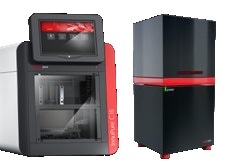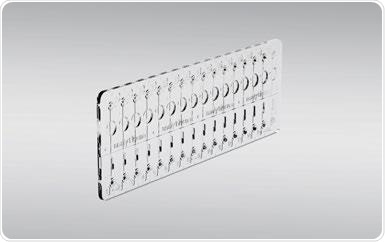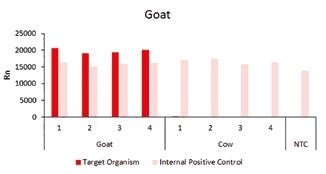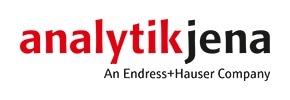Individuals are becoming increasingly aware of nutrition’s major impacts on our quality of life as a whole. Furthermore, this awareness has been heightened by recent scandals in the food industry. It is for these reasons that consumers demand that the ingredients used in food production are subject to rigorous and dependable controls.

A number of these controls, such as species identification, allergen identification and halal testing, can be carried out with molecular biological techniques.
The broad workflow for molecular biological analysis comprises the extraction of nucleic acid from sample material, followed by quality analysis (for example, by photometry) and a diagnostic assay, largely based on polymerase chain reaction (PCR).
Extensive processing and the inclusion of additives make the extraction of nucleic acids from food a difficult process. Once nucleic acids are extracted, the analysis relies on adequate quantity and quality of DNA, as well as the availability of an assay to detect the parameter of interest, such as species identification.
This article details the extraction of deoxyribonucleic acid (DNA) using InnuPure® C16 touch with innuPREP Food DNA Kit-IPC16, specially developed for extraction of DNA from processed food.
Following quality control with the ScanDrop® 250 and CHIPCUVETTE®, the innuDETECT Cheese Assay and qTOWER3 G (qPCR) system are used to analyze extracted DNA for the presence of genes specific to sheep, goats and cows.
The food quality control workflow showcased in this piece enables the automated extraction of up to 16 food samples simultaneously.
This facilitates medium sample throughput while keeping hands-on time and manual processes to a minimum. Subsequent analysis includes concurrent detection of DNA quantity and quality with CHIPCUVETTE® microfluidic system and species analysis with precise and sensitive qPCR.
Materials and Methods
Samples and Reagents
- Two varieties of commercially obtainable cheese, declared as derivative of either goat milk or cow milk
- innuDETECT Cheese Assay
- 96 Well PCR-Plate (0.2 ml; LP), full-skirted, white
- innuPREP Food DNA Kit-IPC16
- Optical sealing foil (77 × 140 mm), adhesive, transparent, peelable
Instrumentation
- InnuPure® C16 touch
- BioShake iQ with adapter for 35 × 1.5 ml tubes or 24 × 0.5 ml tubes
- ScanDrop® 250 with CHIPCUVETTE®
- qTOWER3 G
Preparation of DNA from Cheese
The below procedure is used to extract DNA with innuPREP Food DNA Kit-IPC16 and InnuPure® C16 touch. 200 mg of the cheese sample is placed in 1.5 ml reaction tubes. The sample is then blended with 800 μl Lysis Solution CBV and 20 μl proteinase K, before being robustly mixed on a vortex.
For homogenization, lysis and proteinase K digest, the sample is incubated for 1 hour at 65 °C, shaking with 1,000 rpm. Following this, solid particles are isolated through centrifugation of the lysate for 10 min with 11,000 × g. 400 μl of the supernatant is placed in the Reagent Plate of the innuPREP Food DNA Kit-IPC16.
The sample tray, which contains the Reagent Plate with samples, single-use pipet tips and elution tubes, is placed in the InnuPure® C16 touch, before the protocol (Internal Lysis 200 μl – 04) of the InnuPure® C16 touch in set in motion.
The end of the extraction protocol requires confirmation, after which, the extracted DNA can be unloaded. DNA can then be held at -20 °C until required. Quadruple extractions are made of each type of cheese.
Analysis of DNA Quantity and Quality
ScanDrop® 250 and CHIPCUVETTE® are used to quantify the DNA. The ScanDrop® family of instruments are polychromatic photometers which are capable of evaluating an entire spectrum within just one rapid detection procedure.
The software for device control is pre-set to calculate the quantity of DNA on the basis of the absorption value of light with a wavelength of 260 nm. The DNA’s quality is defined through calculation of the ratios of the absorption of light with wavelengths of 260 nm and 280 nm.

Figure 1. CHIPCUVETTE®
Analytik Jena’s CHIPCUVETTE® (Figure. 1) enables the examination of up to 16 samples concurrently (1 reference and 15 samples). Each sample can be detected with path lengths of 1 mm and 0.1 mm, making dilution unnecessary.
Quantitative Real-Time PCR Analysis of Cheese Samples
The innuDETECT Cheese Assay comes equipped with a trio of individual primer/probe mixes for detection of genes indicative of cows, sheep and goats. Extracted DNA from each sample was blended with each of the primer/probe mixes as outlined in table 1.
Table 1. Pipetting scheme for innuDETECT Cheese Assay.
| Component |
V [µl] |
| 2 × Mastermix |
10 |
| primer/probe mix |
3 |
| internal control |
1 |
| sample |
1 |
| PCR-grade H2O |
ad 20 |
For non-template control (NTC), PCR-grade water is employed in place of sample. 96 well plates and optical sealing films were employed, as noted above. The qTOWER3 G was programmed in the following manner (table 2).
Table 2. Temperature profile for qPCR.
| T [°C] |
t [s] |
Cycles |
| 95 |
120 |
|
| 95 |
10 |
35 |
| 62 |
45 |
The device control software qPCRsoft is used for analysis and display of data.
Results and Discussion
Following the extraction of DNA from 200 mg of cheese, photometry was used to study the concentration and quality (Table 3).
Table 3. Results of photometric analysis of extracted DNA using ScanDrop® 250.
| Cheese type |
Replicate |
A260/A280 |
c [ng/µl] |
| Goat |
1 |
2.03 |
9.86 |
| 2 |
2.02 |
11.07 |
| 3 |
2.01 |
12.56 |
| 4 |
2.01 |
12.59 |
| Cow |
1 |
2.07 |
16.3 |
| 2 |
1.96 |
12.78 |
| 3 |
2.03 |
12.38 |
| 4 |
2.01 |
9.84 |
The photometric data of Table 3 indicates that 200 mg cheese was adequate for the cheese types tested to provide enough DNA for PCR-based downstream uses. Furthermore, DNA extracted was of good purity, although the sample material used was complex and heavily processed.

Figure 2. Detection of sheep-specific target gene
qPCR analysis of the samples, using the primer/probe mix for sheep-specific genes, gave negative results for all samples of the two cheese types (Figure 2). This was as anticipated, since the cheese is affirmed to be derived from cow and goat milk, respectively.

Figure 3. Detection of goat-specific target gene.
The analysis shows that the quadruplicates of the cheese labeled as goat cheese were positive for detection of the goat-specific genes and negative for cow-specific genes (Figure 3). Likewise, the cheese labeled as being derived from cow milk was negative for goat-specific genes and positive for cow-specific genes (Figure 4).

Figure 4. Detection of cow-specific target gene.
False negative results can be omitted, as Internal Positive Control is identified in DNA of all extracted samples.
Conclusion
The findings indicate that the workflow of DNA extraction using InnuPure® C16 touch with innuPREP Food DNA Kit-IPC16 in combination with innuDETECT Cheese Assay and qTOWER3 enables the safe and dependable identification of the origin of milk in cheeses.
About Analytik Jena US
Analytik Jena is a provider of instruments and products in the areas of analytical measuring technology and life science. Its portfolio includes the most modern analytical technology and complete systems for bioanalytical applications in the life science area.
Comprehensive laboratory software management and information systems (LIMS), service offerings, as well as device-specific consumables and disposables, such as reagents or plastic articles, complete the Group’s extensive range of products.
About Life Science
The Life Science product area demonstrates the biotechnological competence of Analytik Jena AG. We provide a wide product spectrum for automated total, as well as individual solutions for molecular diagnostics. Our products are focused to offer you a quality and the reproducibility of your laboratory results.
This will surely ease your daily work and speed up your work processes in a certain way. All together we support you through the complete process of the lab work. Besides we offer customized solutions and are able to adapt our products to your needs. Automated high-throughput screening systems for the pharmaceutical sector are also part of this segment’s extensive portfolio.
About Analytical Instrumentation
Analytik Jena has a long tradition in developing high-performance precision analytical systems which dates back to the inventions made by Ernst Abbe and Carl Zeiss. We have grown to become one of the most innovative manufacturers of analytical measuring technology worldwide.
Our business unit Analytical Instrumentation offers excellent competencies in the fields of optical spectroscopy, sum parameters and elemental analysis. Being proud of our core competency we grant all our customers a long-term warranty of 10 years for our high-performance optics.
About Lab Automation
With more than 25 years of market experience, Analytik Jena with its CyBio® Product Line is a leading provider for high quality liquid handling and automation technologies. In the pharmaceutical and life science industries, our products enjoy the highest reputation for precision, reliability, robustness and simplicity.
Moreover, the Automation Team designs, produces and installs fully automated systems tailored to our clients' application, throughput and capacity requirements. From stand-alone CyBio® Well up to fully customized robotic systems we handle your compounds, biomolecules and cells with great care.
Sponsored Content Policy: News-Medical.net publishes articles and related content that may be derived from sources where we have existing commercial relationships, provided such content adds value to the core editorial ethos of News-Medical.Net which is to educate and inform site visitors interested in medical research, science, medical devices and treatments.